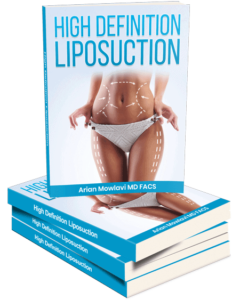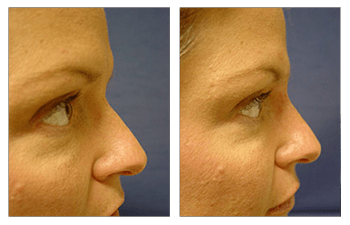WANT THE CONFIDENCE THAT COMES WITH
KNOWING YOU LOOK YOUR BEST?
Non-surgical Rhinoplasty CASE STUDIES
non-surgical rhinoplasty case studies
Non-Surgical Rhinoplasty
Non-surgical rhinoplasty utilizes a safe and non-allergenic filler, called Radiesse, to camouflage a nasal hump, fill in a low radix (the junction between the forehead and the start of the nasal dorsum, and/or to correct nasal contour irregularities following rhinoplastic surgery. Although the injection of fillers is typically reserved for patients not desiring to have rhinoplasty surgery, its results can be quite remarkable.
Radiesse is a bone imitation (30% microspheres and 70% carboxymethylcellulose gel) made synthetically from ocean coral, which is packaged into 1.5, 1.3, and 0.4 ml syringes. Dr. Paris injects the material into a deep plane directly overlying the nasal bones to improve nasal dorsum and even nasal tip contour irregularities.
Average volumes of injection range from 0.4ml for nasal tip asymmetries to 1.5ml for creating a more prominent nasal dorsum. Since Radiesse can be injected in micro-volumes, patients can expect the correction of even subtle nasal deformities.
Radiesse injection of the nose is performed in the office and takes approximately 10 minutes to perform. A local anesthetic is utilized to provide regional numbing of the nose prior to injection. Patients should expect an immediate correction of their nasal deformity.
Since Radiesse injections can result in slight bruising and swelling that lasts for 2 to 3 days it is advised to schedule your treatment 1 week prior to any major social events. In addition, it is wise to avoid any blood thinners such as aspirin or herbal products for two weeks prior to treatment.
Clients can expect their results to last at least 12 months. Some patients may even notice more permanent results felt to have resulted from collagen deposition surrounding the filler material.
Frequently Asked Questions:
Is a cannula more likely to be used for the bridge or tip?
Non-surgical nose job is only effective for treatment of the nasal dorsum and radix and not the tip. This is because the tip requries structural firmness to allow for projecting the tip out which is not afforded by any available fillers today. I prefer the use of Radiesse which provides the most structural support. Risk of blindness is best avoided by blocking all of the vessels in the area with local constricting or numbing solution. This is more important than use of a cannula. We have successfully treated over 500 patients with Radiesse and not observed any complications using this protocol.
How many weeks until the final result after non surgical rhinoplasty?
Results after nonsurgical rhinoplasty are immediate; you must have this procedure done by a nasal specialist and using the proper filler; the proper filler for the nose needs to be more rigid in order to create structure rather than a blob that makes you look fatter.
What nose filler adds the most volume?
The very best filler on the market for non-surgical rhinoplasty is Radiesse. Don't waste your money on Restylane. Radiesse not only provides the best replacement material (feels like your nasal structures), it lasts a minimum of 1.5 years, and some of the filling is even permanent.
Patient-Specific Questions:
Can a filler fix my nose tip?
Tip lifting is not possible with a filler since the filler is not strong and rigid enough to hold the weight of the tip. this is in contrast to the nasal dorsum which can be filled to increase height. Radiesse is the best nose filler
Would filler be a good option to correct the side of my nose?
Would filler be a good option to correct the side of my nose?
Non surgical nose job to correct uneven nostrils and adding some slight definition to tip.
The definitive treatment for your nose which is severely deficient in both nasal tip projection as well as nasal dorsum height is an open rhinoplasty with rib graft.
The good news is that we can now use an organ donated rib graft for this purpose which allows you to avoid having to use yours.
Please note that since your deficiency is so severe, I would avoid using a filler as although it will make it slightly better, you are going to then complicate your surgery as it will create scar tissue that will make estimating your graft size more difficult for the surgeon.


